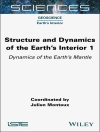Forty years ago when plate tectonics was first discovered, there was a major shift in thinking in the Earth Sciences. Little was known at that time about the deep mantle because of the lack of knowledge about material properties, the absence of any seismic tomography or concepts such as mantle convection. Thus the theory of platetectonicswasbuiltonsurfaceobservationsandkinematicconstraints.Thetheory of plate tectonics is not independent but consists of several assumptions. Examples are the origin of arc magma, MORB or OIB, and the distribution of earthquakes and the plate margin processes are all part of plate tectonics theory. In the intervening years much progress has been made in all three burgeoning areas of mineral physics, seismic tomography and mantle dynamics, thanks to the technological advances in synchrotron radiation and supercomputers. Mineralphysicsstudieshaveprovidedsomeofthekeyparametersthatcontrolthe style of mantle convection. The style of convection in the Earth’s mantle is largely controlled by complex material properties including the changes in density and v- cosityassociatedwithalargevariationinthepressureandtemperatureofthe Earth’s interior. These key physical properties have become the target of both experimental andtheoreticalstudiesinmineralphysics.Startingfromtheearly90s, theadvancesin high-performance computational capability has allowed us to incorporate these m- eral physics findings into large-scale computational modeling of mantle convection; and these studies have highlighted the complexities of mantle convection caused by the variation in density due to both thermal and chemical anomalies (and viscosity) in the Earth’s deep interior.
Tabella dei contenuti
The Thermal and Compositional Structure of the Earth.- Multiscale Seismic Tomography of Mantle Plumes and Subducting Slabs.- Seismological Constraints on the Structure of the Earth’s Core.- Post-Perovskite Phase Transition and the Nature of the D? Layer.- Post-Perovskite Mg Si O3 Investigated by First Principles.- Seismological Evidence and Boundary Layers in the Mantle.- Subduction Zone: The Water Channel to the Mantle.- Fine-Scale Ultra-Low Velocity Zone Layering at the Core-Mantle Boundary and Superplumes.- Global Material Circulation and Petrogenesis of Superplume Rocks.- A Geochemical and Petrological View of Mantle Plume.- Material Circulation through Time: Chemical Differentiation Within the Mantle and Secular Variation of Temperature and Composition of the Mantle.- Dynamics of Superplumes.- Dynamics of Superplumes in the Lower Mantle.- Thermal Conductivity of the Earth’s Deepest Mantle.- Thermo-Chemical Structure of the Lower Mantle: Seismological Evidence and Consequences for Geodynamics.- Microscopic Models for the Effects of Hydrogen on Physical and Chemical Properties of Earth Materials.- Plume Dynamics through Earth History.- History of the Pacific Superplume: Implications for Pacific Paleogeography Since the Late Proterozoic.- Plume Winter Scenario for Biosphere Catastrophe: The Permo-Triassic Boundary Case.- Dynamics of Plumes and Superplumes through Time.- Plumes and Superplumes on Mars and Venus.- Tharsis Superplume and the Geological Evolution of Early Mars.- Traits and Evolution of the Tharsis Superplume, Mars.- Plumes and Plume Clusters on Earth and Venus: Evidence from Large Igneous Provinces (LIPs).
Circa l’autore
The four editors and most contributors have been a major group to organize recent critical international workshops, AGU special symposium, and other international workshop including last several Penrose conferences.












